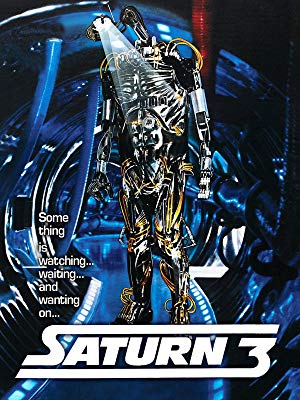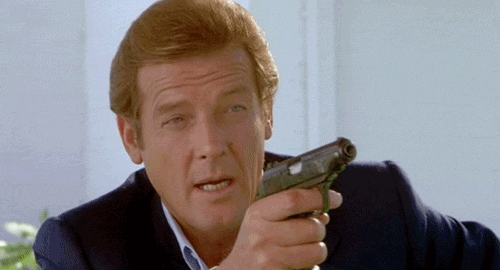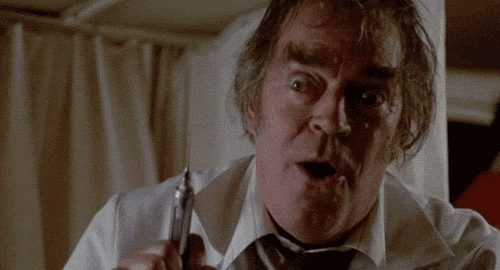Welcome to Retro Television Reviews, a feature where we review some of our favorite and least favorite shows of the past! On Sundays, I will be reviewing the made-for-television movies that used to be a primetime mainstay. Today’s film is 1971’s The Feminist and The Fuzz! It can be viewed on YouTube!
At first glance, Jane Bowers (Barbara Eden) and Jerry Frazer (David Hartman) don’t have much in common.
Jerry is a cop, though he’s attending night school with the hope of someday becoming a lawyer. Jerry is an old-fashioned law and order man. He expects the law to be followed. He’s also the type who definitely believes that there are clear differences between men and women. As he explains it, there are some thing that men are just better at. Jerry is dating Kitty (Farrah Fawcett), who works as a waitress at the local Playboy Club.
Dr. Jane Bowers is a pediatrician and a proud feminist, one who takes it personally when a cop like Jerry refuses to give her a parking ticket just because she’s a woman. She wants to be treated as an equal in all matters. She’s dating Wyatt Foley (Herb Edelman), an attorney who still lives with his mother and who constantly goes out of his way to let everyone know that he’s an ally. Jane’s best friend is Dr. Debby Inglefinger (Jo Anne Worley), who has decided that it’s time to lead a protest at the Playboy Club.
The only thing that Jerry and Jane have in common is that they both desperately need an apartment but apparently, apartments were not easy to find in San Francisco in the early 70s. Fortunately, a hippie (Howard Hesseman) has just been evicted from his apartment because the landlord (John McGiver) didn’t like the fact that he was constantly having overnight guests. Jane and Jerry both end up at the apartment at the same time, with Jane getting offended by Jerry’s refusal to give her a traffic ticket. (Jerry makes the mistake of saying that he’s going to let her off “with a warning.” He wouldn’t give a warning to a man! Seriously, though, who in their right mind would actually demand a ticket? Those things cost money.) Even though they take an instant dislike to each other, Jane and Jerry still decide to pretend to be husband and wife so that they can rent the apartment together. With their busy schedules, they figure that they’ll never have to see each other. They won’t even know the other is around.
Of course, it doesn’t work out like that. Jane allows Debby to hold a consciousness raising meeting at the apartment. (Future director Penny Marshall appears as a participant.) Meanwhile, Jerry lets a prostitute (Julie Newmar) stay at the apartment, just to keep her off of the streets for the night. The landlord is getting suspicious. So, for that matter, is Jane’s father (Harry Morgan). And, as you probably already guessed, Jerry and Jane are falling in love.
With its hippies and its militant feminists and its jokes about the Playboy Club, The Feminist and the Fuzz is a film that practically yells, “1971!” Unfortunately, script’s attempt to turn the film’s rather predictable plot into a Neil Simon-style jokefest never quite works. The “humorous” dialogue feels forced and the film’s 75-minute run time doesn’t do it any favors, as we never really have the time to get to know Jerry or Jane as human beings. Instead, they just remain “The Fuzz” and “The Feminist.” As a result, it’s not that easy to care about whether or not they actually get together. Some of the supporting performances are amusing. Barbara Eden manages to avoid turning Jane into a caricature of a humorless activist but poor David Hartman is stiff as a board and in no way convincing as a veteran cop.
The main thing I took away from this movie is that the Playboy Clubs were exceptionally tacky. Way back in 2011, NBC actually tried to air a drama series that took place at a Playboy Club in the 60s. (This was when every network was trying to come up with the next Mad Men.) The pilot started with creepy old Hugh Hefner assuring the viewers that, “Everybody who was anybody wanted to be a member of the club.” I mean, seriously? What a strange world.





 The time is the future and Earth is so polluted and overcrowded that the survival of humanity is dependent on space stations that are located across the galaxy. On one of the moons of Saturn, Adam (Kirk Douglas) and Alex (Farrah Fawcett) are researching and developing new ways to grow food. Alex is young and has never experienced life on Earth. Adam is in his 60s and says that Earth is the worst place in the universe. Alex and Adam are not just colleagues but lovers as well. Inside the tranquil facility, Adam, Alex, and Sally the Dog live a lifestyle that feels more like late 70s California than 21st century Saturn.
The time is the future and Earth is so polluted and overcrowded that the survival of humanity is dependent on space stations that are located across the galaxy. On one of the moons of Saturn, Adam (Kirk Douglas) and Alex (Farrah Fawcett) are researching and developing new ways to grow food. Alex is young and has never experienced life on Earth. Adam is in his 60s and says that Earth is the worst place in the universe. Alex and Adam are not just colleagues but lovers as well. Inside the tranquil facility, Adam, Alex, and Sally the Dog live a lifestyle that feels more like late 70s California than 21st century Saturn.










